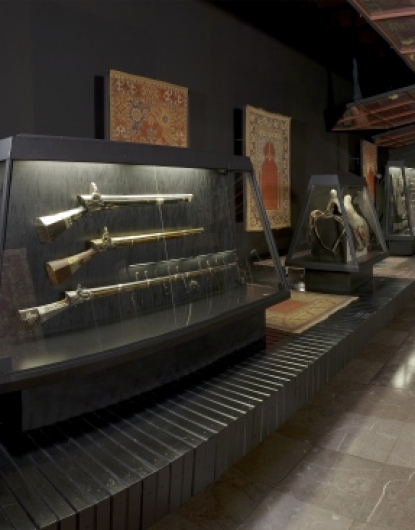
Art of the Orient
Throughout its history, the vast Polish-Lithuanian Commonwealth had myriad contacts with the lands of Islam, and their splendid arts and crafts struck a chord with the tastes of the Poles. Through trade contacts and military conflicts magnificent carpets, silks and wall hangings, arms and armor, parade saddles, and other goods from Turkey, the Crimea, the Caucasus, and Iran filtered into the Commonwealth becoming prized and used objects in the homes of the nobility as well as the royal court. Splendid Near and Far Eastern decorative arts objects are on view in the exhibition.
The most important is of a group of trophies taken during the Battle of Vienna (September 12, 1683) – the sweeping victory of the coalition of European armies commanded by King John III Sobieski of Poland over the Ottoman army led by Grand Vizier Kara Mustafa Pasha.
The collection of East Asian porcelain is testimony to 18th-century Europe’s fascination with distant and exotic China and Japan.
The most important is of a group of trophies taken during the Battle of Vienna (September 12, 1683) – the sweeping victory of the coalition of European armies commanded by King John III Sobieski of Poland over the Ottoman army led by Grand Vizier Kara Mustafa Pasha.
The collection of East Asian porcelain is testimony to 18th-century Europe’s fascination with distant and exotic China and Japan.
Vestibule
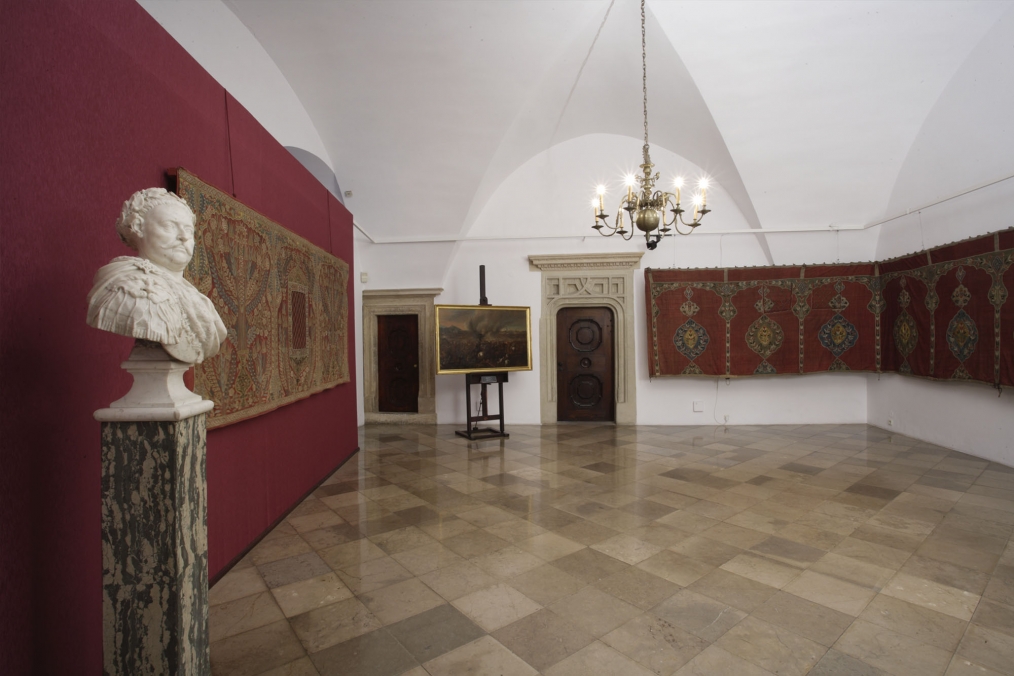
The exhibition opens with two Ottoman tent panels from the turn of the 18th century. They are joined by a painting depicting the Battle of Vienna and a marble bust of King John III Sobieski, the commander of the European coalition army in the battle. The Cracow-Paris carpet displayed in a small chamber on the right, is the most precious Persian work in the Wawel collection, on long-term loan from Wawel Cathedral. The carpet depicting an Edenic garden was woven in the second quarter of the 16th century for Shah Tahmasp I in his capital, Tebriz.
The Banner Room
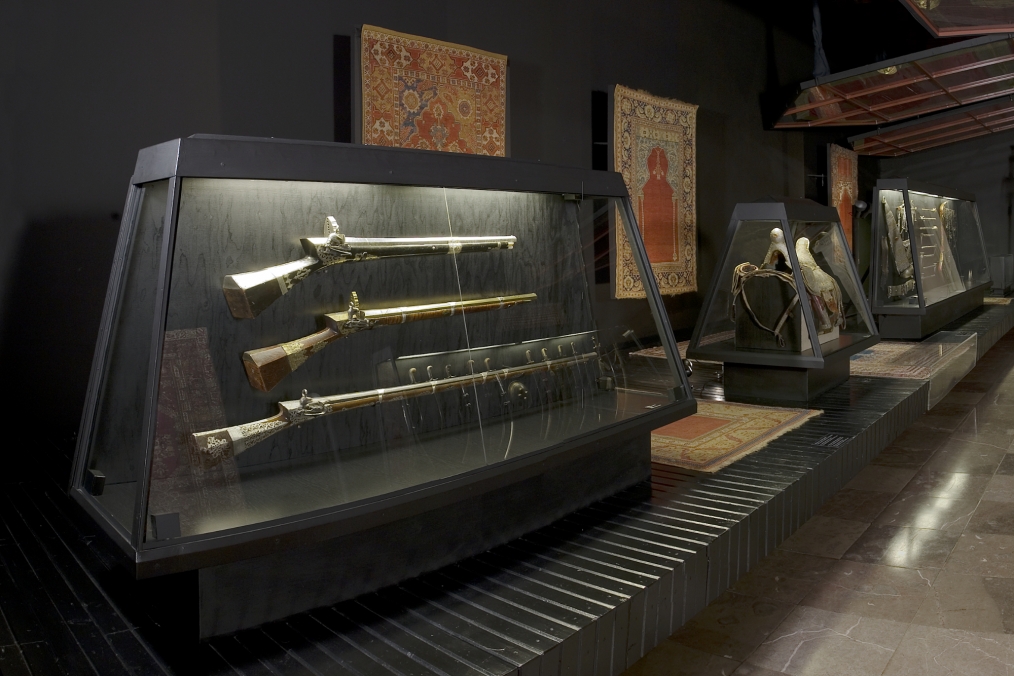
The pantheon of the Vienna victory holds a precious set of banners: four Ottoman standards captured at Vienna on September 12, 1683 and the celebrated standard taken in the Battle of Párkány on October 9, 1683. After the battle, King John III Sobieski sent the latter banner to the Marian sanctuary in Loreto. Other trophies include atug—the symbol of the Vizier’s military authority. Also on view is a 16th-century Ottoman horse armor and a collection of Turkish and Persian sabers (17th–18th century). Prayer rugs (17th–19th century) from the Caucasus and Turkey, originally from the Lwów collection of Włodzimierz and Jerzy Kulczycki, round out the display.
Room with Chinese Vases
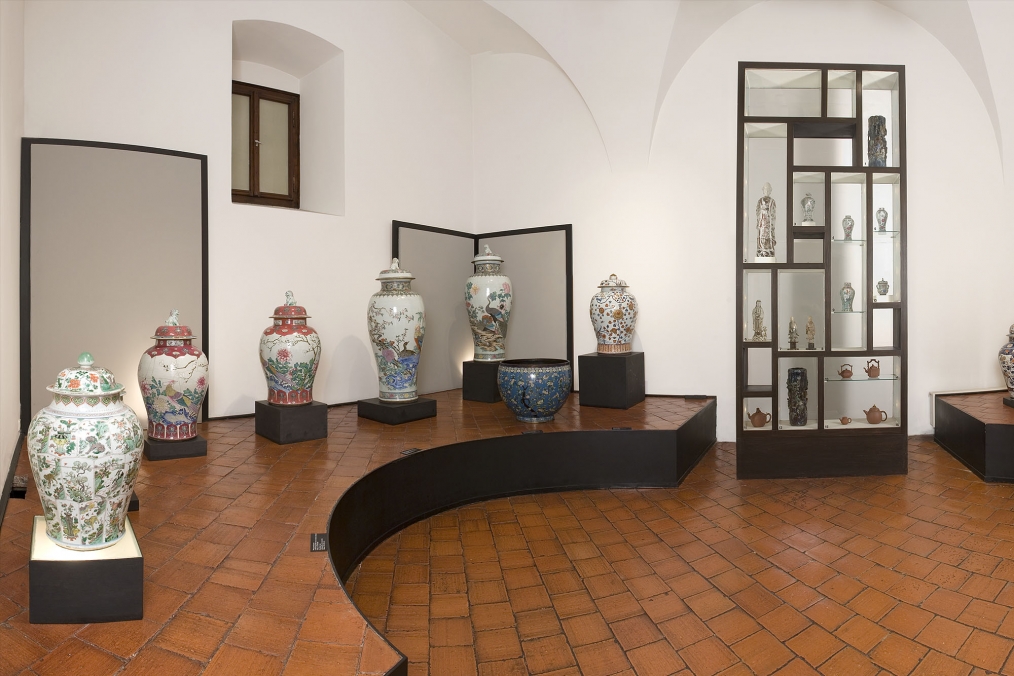
This part of the exhibition is dedicated to East Asian ceramics, including a collection of large 17th–18th century Chinese vases with cobalt and varicolored floral decoration. Among them is a ginger jar with raised decoration and a Buddhist vessel with images of the “eight precious objects”—symbols of prosperity. A display case holds figures of gods and small vessels made of diverse materials such as stoneware, porcelain, and steatite.
Japanese Vase Room
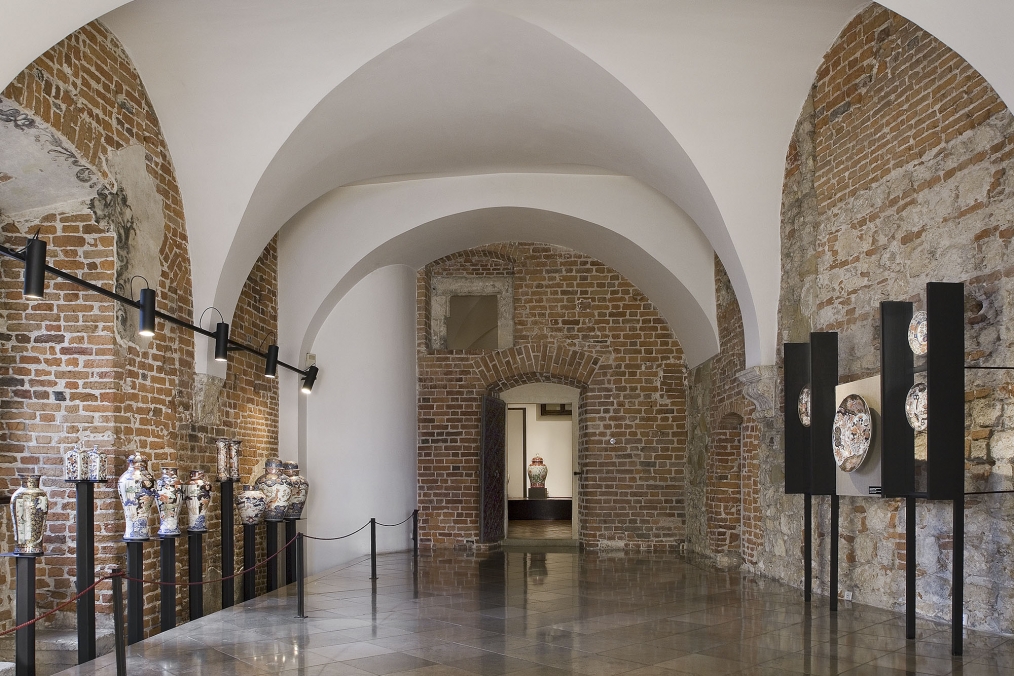
The room located above the palace gate holds a collection of Japanese porcelain, chiefly 18th-century Imari ware. The collection was part of a gift from Empress Catherine II the Great to Prince Henry of Prussia. Through inheritance it was transmitted to the Radziwiłł and Potocki families.
